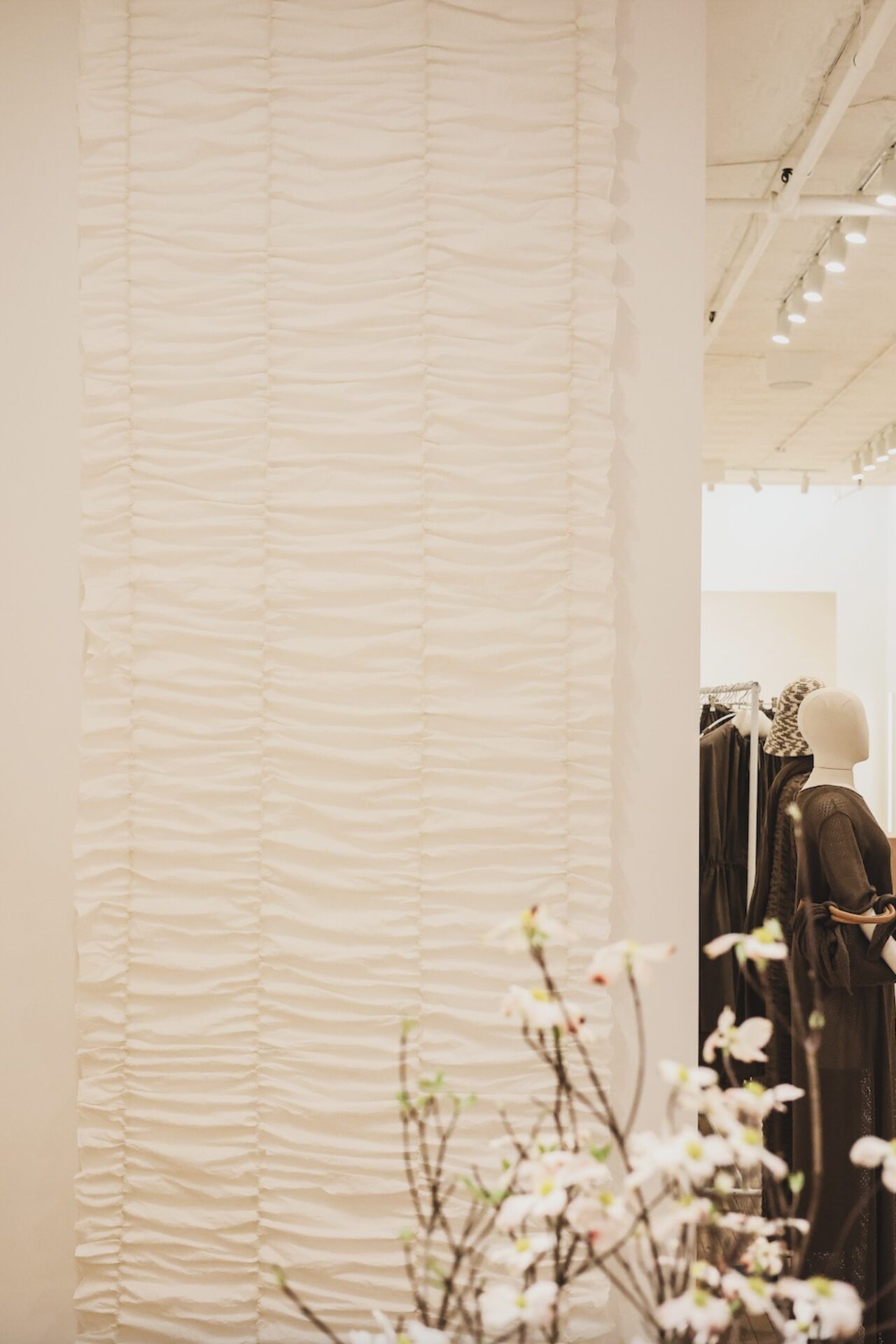X-RAY FLOWERS
Tokyo-Based AMKK's Latest Radical Exploration Of The World Of Flowers
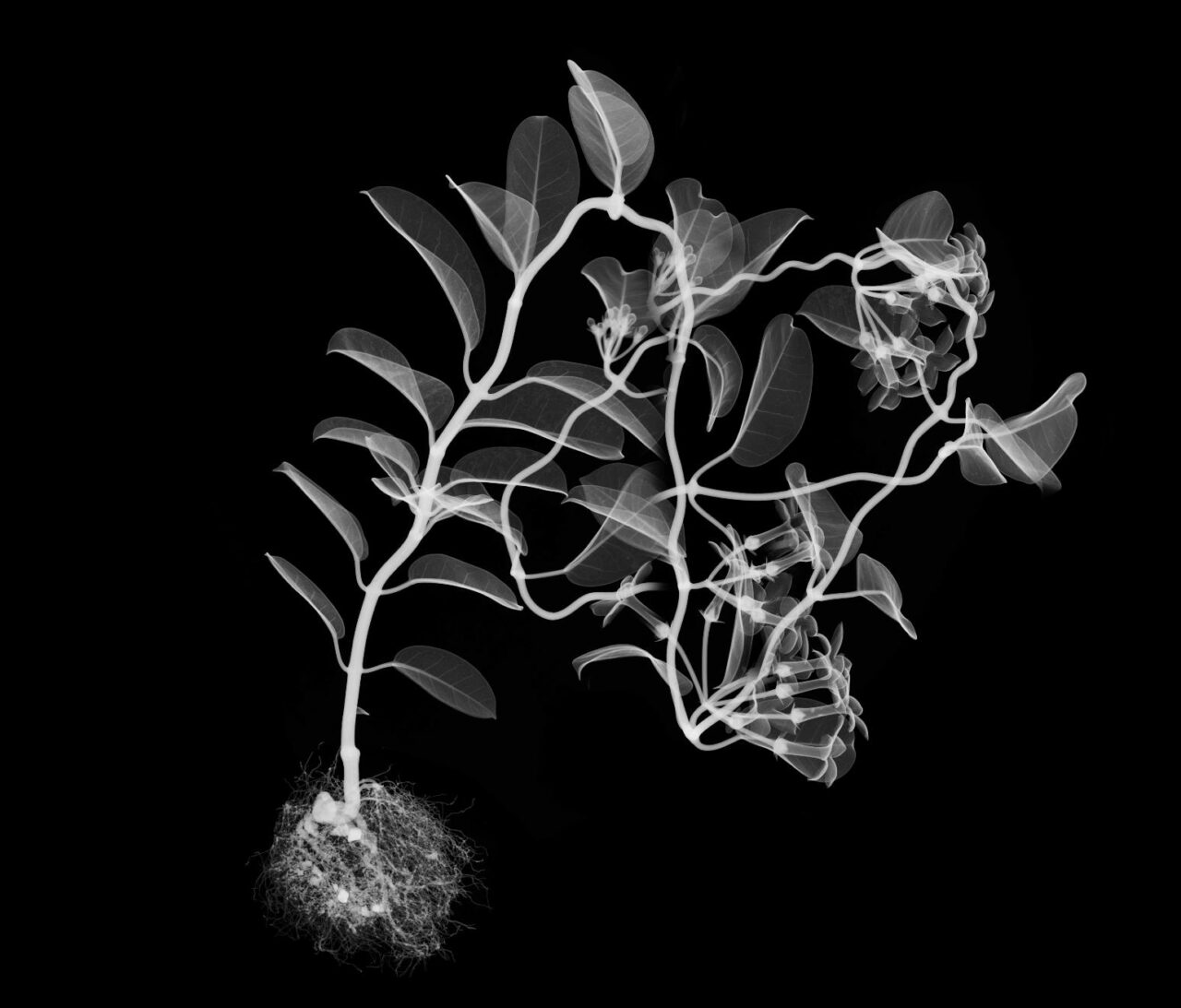
The “floral experimentations” continue at AMKK — acronym for Azuma Makoto Flower Laboratory — the Tokyo-based botanical art collective co-founded by flower artist Azuma Makoto and photographer Shiinoki Shunsuke, alongside their florist studio and store Jardins des Fleurs. Their latest radical approach to the investigation of flowers led them to photographing flowers through X-ray and CT-scan, revealing their skeletal structure in such detail akin to a human body. Yet, plants do not have a skeleton. They maintain their shape and structure because of a rigid cell wall that has sufficient tensile strength to support the plant in the way a skeleton does for a human or animal. AMKK’s aim in creating the series was to reveal their essence of flowers which we usually do not see, placing particular importance on their foundation — their roots.
The new project by AMKK, titled “X-Ray Flowers”, presents a unique capture of flowers through the imaging technique of radiography to create a series from a scientific angle, unveiling a literal transparency and complexity to the living forms. Tokyo-based Champ Editor Joanna Kawecki caught up with flower artist Azuma Makoto to detail more on the extraordinary project.
AMKK(東信, 花樹研究所)は、フラワーアーティストの東 信と写真家の椎木 俊介が花屋のジャルダン・デ・フルールを営む傍らで設立した、東京を拠点とする植物アート集団である。
彼らの花の探究における最新の急進的なアプローチは、X線を通して花や植物を撮影するというもので、人体のようなその内部構造を明らかにした。ただし植物に骨格はない。植物は人間や動物が持つような骨格を持たないながら、植物自身を支えるために十分な強度を持った丈夫な細胞壁を持ち合わせている。このシリーズを通じてAMKKは普段は見えない花の本質を明らかにすることを目的とし、花や植物の基盤である根の存在も重要視している。
このAMKKの新しいプロジェクト「X-Ray Flowers」は、放射線技師に科学的な角度から撮影するよう協力を要請し、文字通り生き物の透明性と複雑さを明らかにした。フラワーアーティストの東 信のこの類まれなプロジェクトの軌跡を辿った。

Joanna: What instigated the idea to create this series?
Azuma Makoto: I undertook this series to explore for not only the beauty on surface of flowers and plants, but also the essence of them which is usually invisible to us.
ジョアンナ:このシリーズのクリエーションについてのアイデアを駆り立てるものはなんですか。
東 信: 花の表面的な美しさだけではなく、普段目には見えない花や植物の本質について追求してみたいという探究心がこのシリーズのはじまりです。
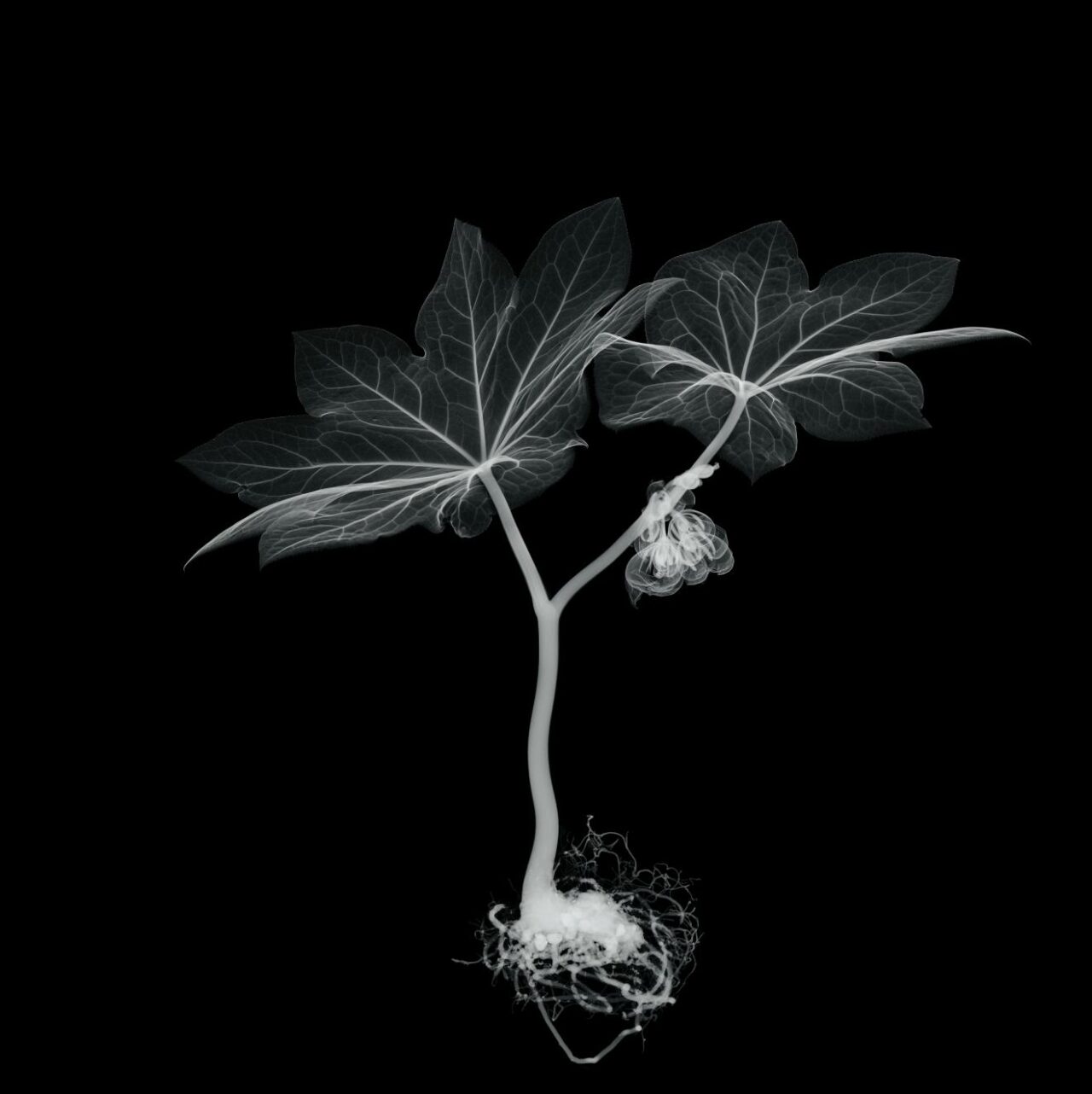
Which type of machine did you use for the x-rays?
Because of the usage of radiation, I did a photoshoot at the special shooting place under the supervision of the specialist for radiography. People are usually not allowed to enter that place, so the atmosphere was very tense.
x-rayにはどのような機械を使用したのですか。
放射線を使用した撮影のため、特殊な撮影場所で専門の技師のもと撮影を行いました。普段は足を踏み入れられない場所ですので、非常に緊張感のある現場でした。
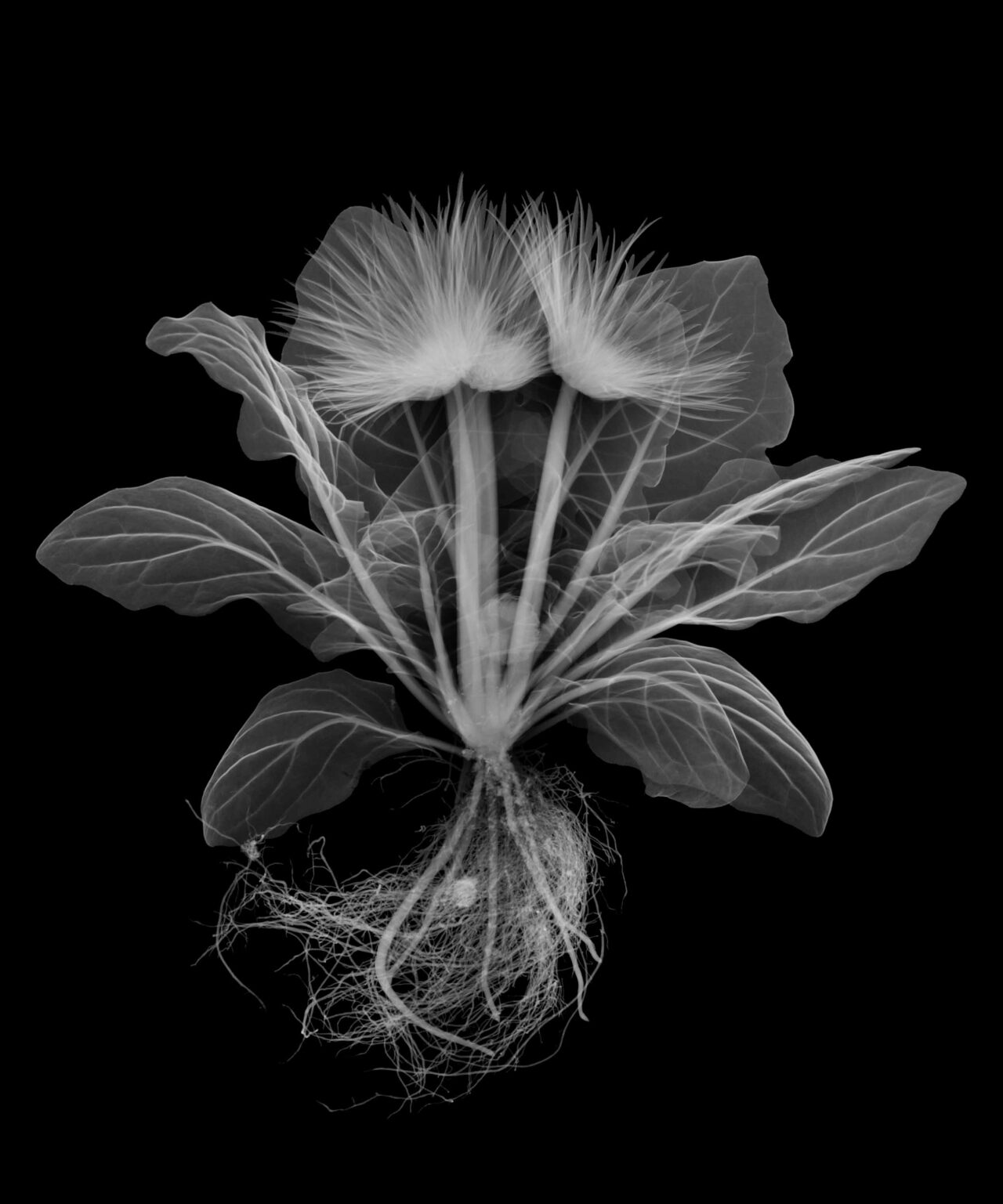
How did you decide which plants or flowers would be x-rayed?
I selected a wide variety of flowers and plants from the ones we are familiar with and see every day to the others which are so unique that we cannot image the inside structure of them from the outside.
どのような基準でどの種類の植物をx-ray flowersに使用するか決めたのでしょうか。
普段から目にする見慣れた花から外から見ただけでは中の構造が想像つかないようなユニークな植物まで、できるだけ様々な種類を撮影したいと考え、セレクトしていきました。
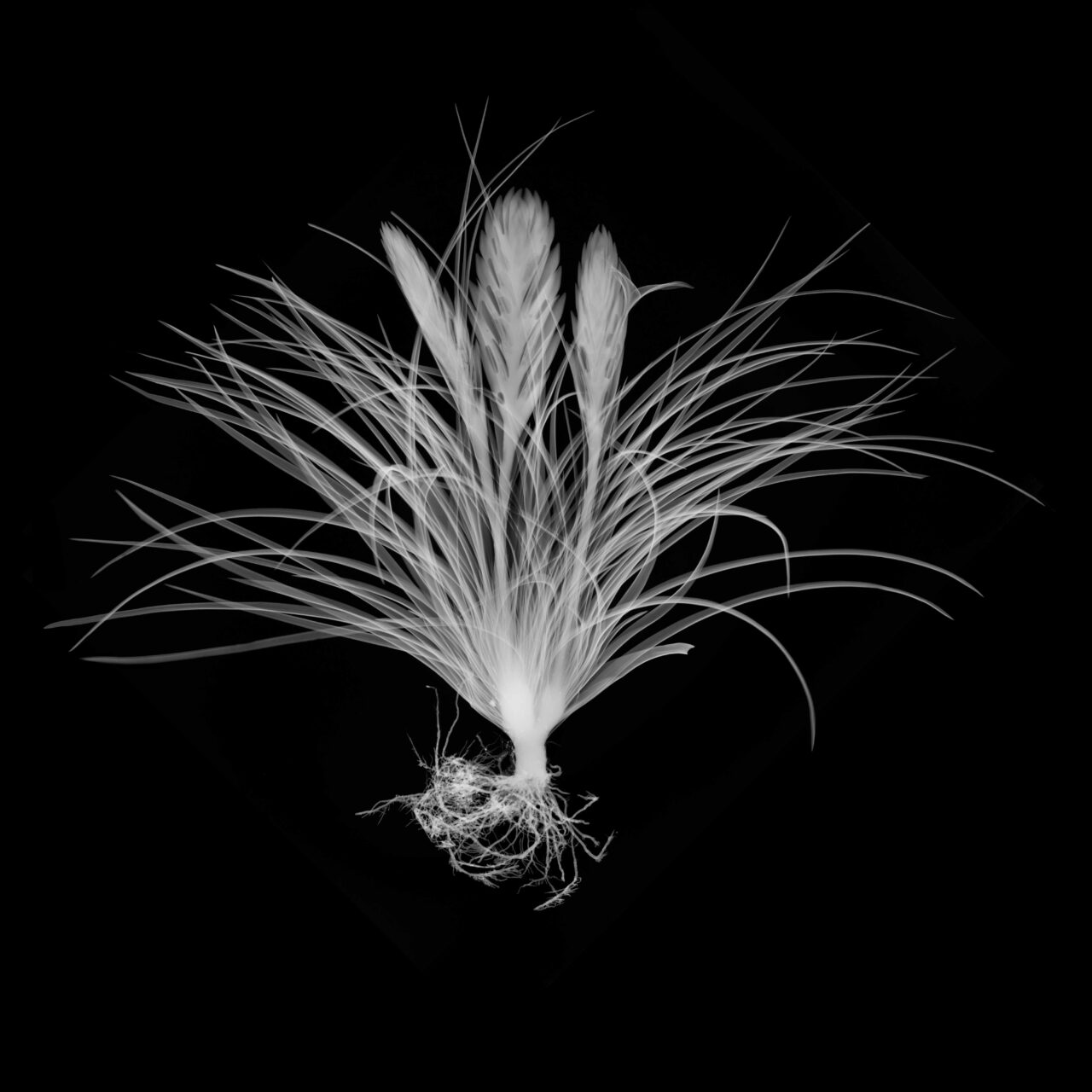
Why did you decide to include the entirety of some plants, including their roots?
Since roots are buried underground, we usually do not see them. They, however, play an important role of sustaining flowers’ lives and are the origin of supporting the strength of live flowers, so I had the interest in visualizing them. By visualizing the roots, I would like people to know that the roots are very delicate but support the entire plants by absorbing necessary nutrients, and also would like them to feel “a life” itself by showing the part that is essential for plants to act as living creatures.
なぜ根っこを含む植物の全体を撮影すると決めたのですか。
根は地中に埋まっているので普段目にすることはありませんが、花の命を司どる重要な部分であることを踏まえて、生の力強さを支えている根源も含めて可視化したいという興味がありました。また根を可視化することで、非常に繊細でありながら必要な養分を吸収したり植物全体を支え、生命としての活動をするためには欠かせない部分を見せることで「命」そのものを感じてもらいたいと思いました。
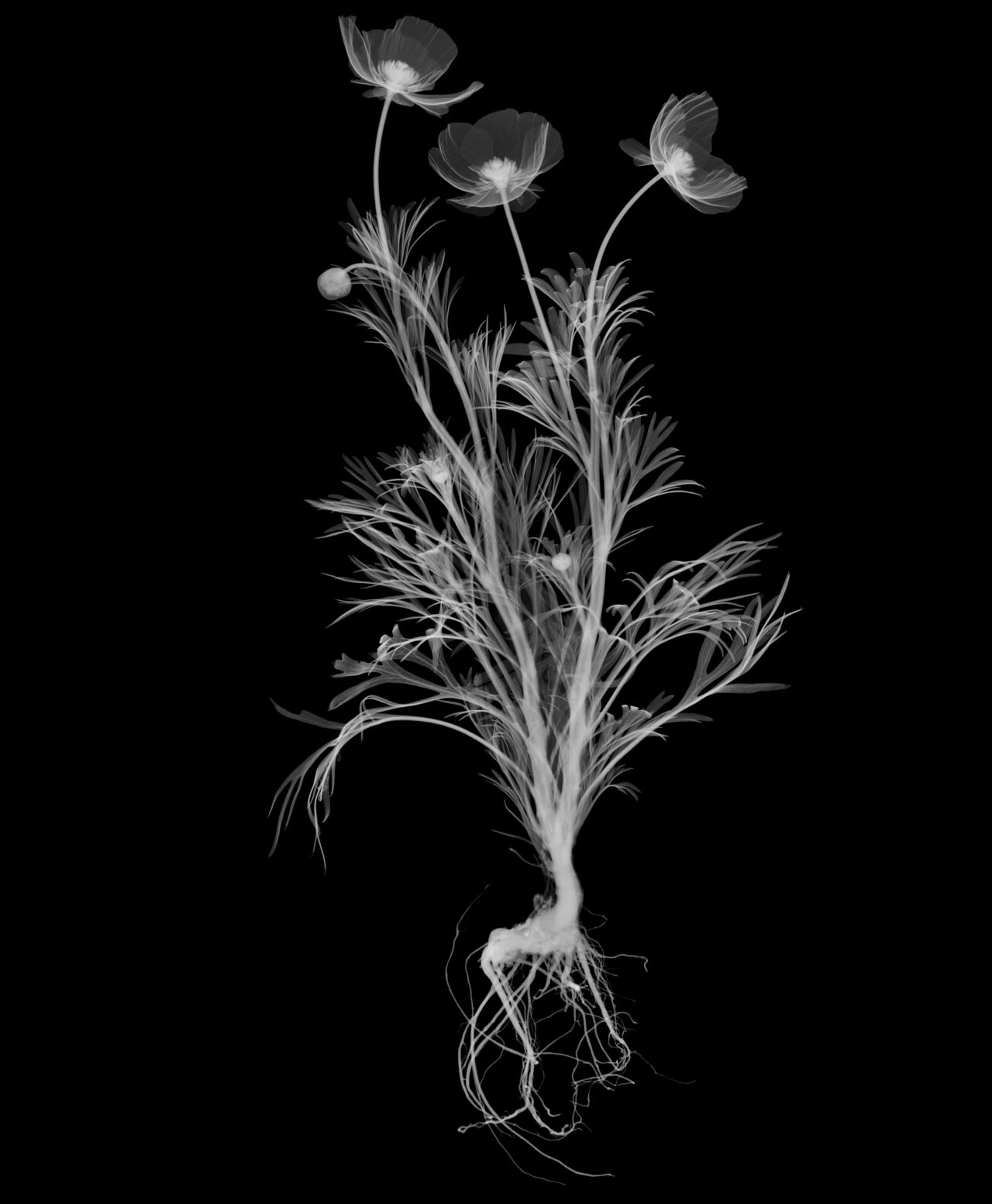
Through your images, you capture the skeletal structure of plants as a living thing. Just as we see the x-ray’s human bodies, we can understand plants better as a living thing through your images. Was this one of your intentions?
I appreciate that you understand humanity and plants are both living creatures through my artworks. I think a human’s skeleton is the same as a vessel and veins of flowers, and skin is what covers them. I created this artwork with the hope that there are things in common between humanity and flowers even though they have a different appearance. I would like people to realize how precious flowers’ lives are.
画像では、東様は生き物として植物の骨格構造をとらえています。同じようにレントゲン写真で人間の身体を見ると、東樣の画像を通して植物が生きているものであることをより深く理解することができるように感じます。これは東様の目的のうちの一つでしょうか。
人間と同じ生き物であることを意識して頂けるのは嬉しいことです。人間でいう骨格は花でいう道管や葉脈であり、それを覆っているのが表皮であると私は考えます。姿形は違えど人間と花は生き物として共通しているところがあるという点や、その命の尊さを実感してもらえたらという思いを込めて作品を作りました。

Were there any challenges with x-raying and photographing the flowers?
Since the internal structure of plants are completely not visible from the outside, I couldn’t anticipate what would be captured if I photographed them through an X-ray. It was as if being in a constant battle with an unknown world. I sought for the best way to express the delicacy of a plants’ interior but also their strength and resilience at the same time.
植物をレントゲン撮影するにあたって、壁にぶつかることはありましたか。
植物の内部構造は外からは全く見えないので、そもそもこの植物をレントゲン撮影したらどうなるのかということの予想がつかず、常に未知の世界との格闘といった感じでした。また植物の内部の繊細さと同時に植物そのものの力強さを表現する最善の方法を模索しました。

Did you discover any new future ideas through this series?
By taking this opportunity to x-ray the internal structure of plants, I was able to learn a lot and feel the profundity of plants and flowers. As a person who uses flowers to express my artworks, I felt that the range of my expression was dramatically expanded by knowing about the flowers from the aspect of science. I would like to create artworks that express the flowers and plants as precious living creatures on a variety of scales, both microscopic and macroscopic point of views, and share them with the people all over the world.
このシリーズを通して、何か新しいアイデアは浮かびましたか。
今回植物の内部構造をレントゲン撮影の機会を得て非常に勉強することができ、さらに花や植物の奥深さを感じました。花を使って表現活動をする私にとって、そういったサイエンスの側面から花を知るということで、表現の幅が飛躍的に広がった感覚があります。花や植物という尊い命の表現を、ミクロでもマクロでも様々なスケールで世の中に発信していける作品を作っていきたいと考えています。
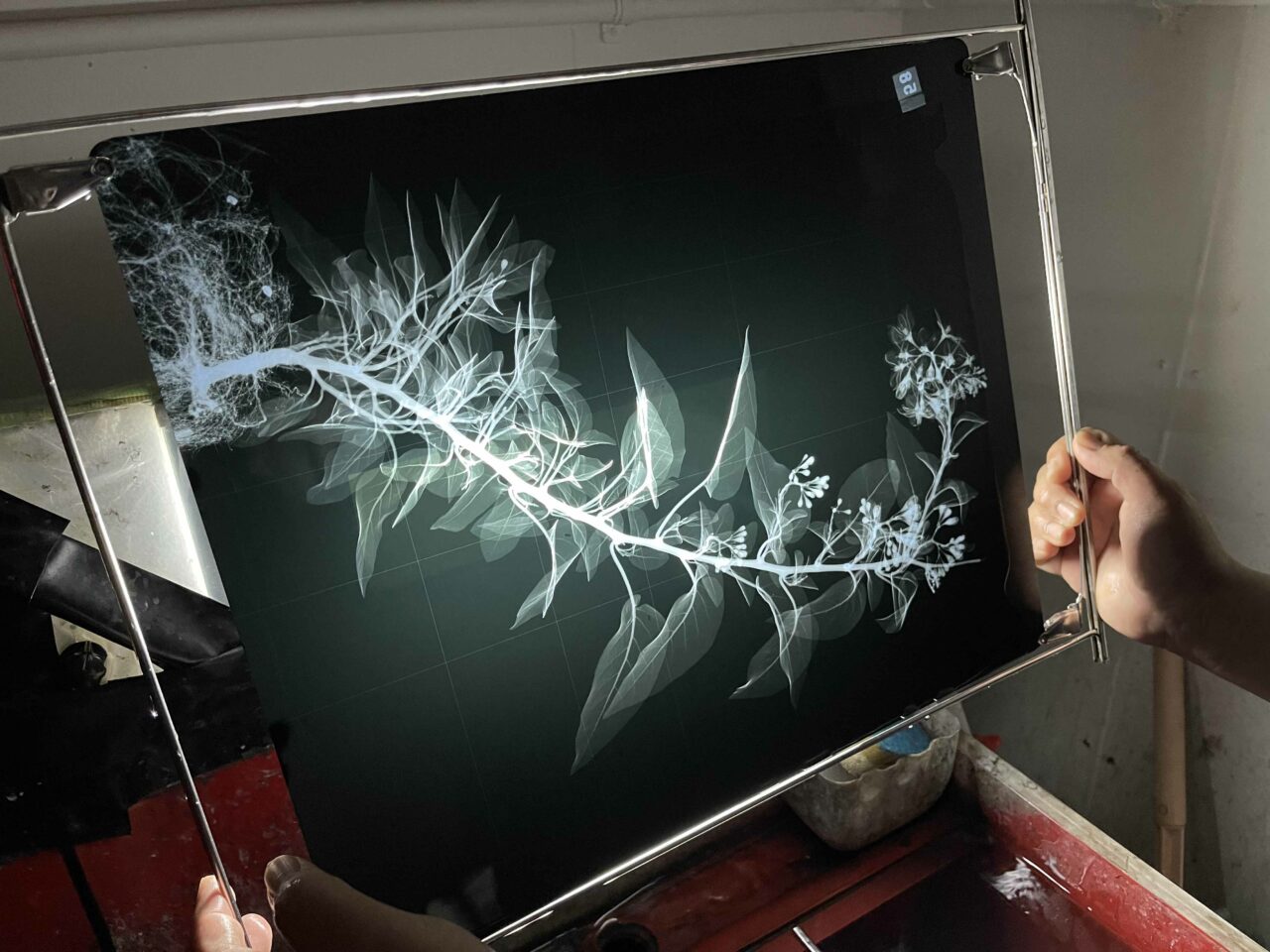
Images: Courtesy AMKK
Interview & Text: Joanna Kawecki


















